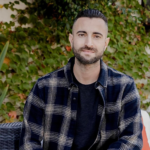Building a business on your own is very challenging. As entrepreneurs, the question we all face is this: “What can we do to keep our business alive if we lack the right connections and resources?”
Many startups fail, not because they don’t have a great product but, because they did not have the financial support necessary for fast growth. So, if you need to boost operations or if you’re just starting product development, accelerators can offer great benefits.
Accelerators can help you grow your business, develop your product or idea, and expand your network of investors. In 2014, I applied (and was accepted) to AngelPad, a global accelerator based in San Francisco and NYC. Being there made a huge difference in my business.
Here are three crucial steps that helped me stand out from the crowd and get accepted to an accelerator program.
-
Highlight your uniqueness.
Good startup accelerators are flooded with applications from promising entrepreneurs. It has become really hard to stand out. For example, AngelPad receives thousands of applications per session, and out of those only a handful are invited to the interview with founders Thomas Korte and Carine Magescas.
Standing out among thousands of applicants is the most difficult part of the process. Here it is important for you to explain, in a concise way, what makes your business unique. Do you have traction? Show numbers! Still working on an idea? Highlight your previous experience. It also helps if you have a big brand on your resume like Google or Facebook, or an Ivy League education.
-
Be clear and straightforward during the interview.
The interview process is usually short, sharp, and to the point. In my case, I spent less than 30 minutes discussing our product and vision. In this stage, don’t waste time with a complex explanation of your business. Be simple. Give a quick and well-articulated explanation of the value of your business and why your team is the right one to execute it. Be prepared for real feedback.
Don’t forget: this is not the same as a pitch to investors. In my case, I had to answer the question of, “What are my greatest weaknesses?” and articulate how I would overcome them. Here it is crucial to show originality, not so much on your product, but more importantly, on your vision. The interview process is an opportunity to challenge all of your assumptions. You will be asked to get out of your comfort zone, so get ready to creatively think about solutions for your business.
-
Know market and industry essentials.
It’s paramount that you know your competitors (or who they will be) and explain your competitive advantage.
You need to know everything about your target market and your customer base. Then be ready to answer questions such as “What is the value of your customer acquisition” or “Why do you think customers will buy your product?”
In some cases, there will be more than an interview with the candidate. It all depends on how well you know your market and demonstrated expertise in your field. I had to go through two interviews with AngelPad.
After a few interviews, you’ll get a final answer of whether or not you made it. If you don’t get into a startup accelerator on your first attempt, don’t stop trying. Learn what went wrong and work on improving your pitch for next time. Being part of an accelerator was an extremely rewarding experience, and it is sometimes a matter of timing. You need to have the right idea, at the right time. Be persistent and you’ll get there.
Gil Dantas is the co-founder of Jigglist, a New York-based mobile communication platform that provides top recommendations from trusted networks. Connect with @jigglist on Twitter.
© YFS Magazine. All Rights Reserved. Copying prohibited. All material is protected by U.S. and international copyright laws. Unauthorized reproduction or distribution of this material is prohibited. Sharing of this material under Attribution-NonCommercial-NoDerivatives 4.0 International terms, listed here, is permitted.






